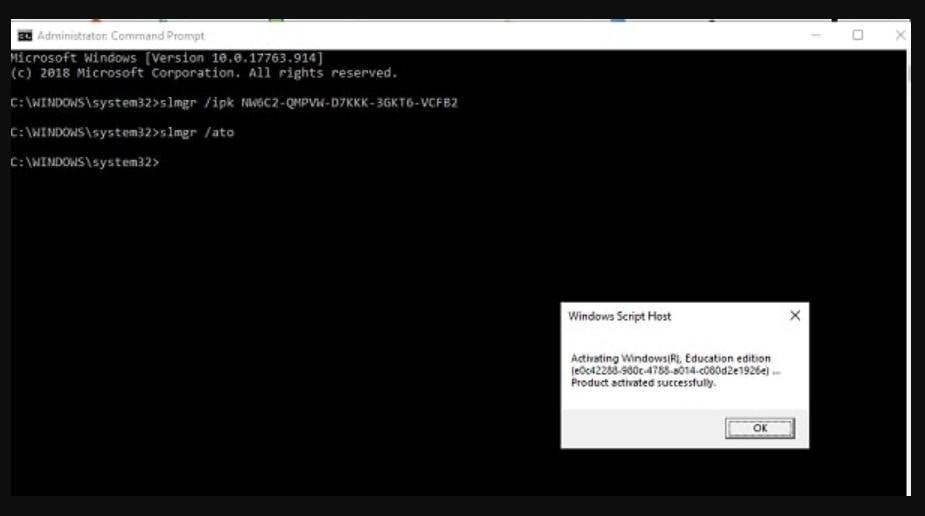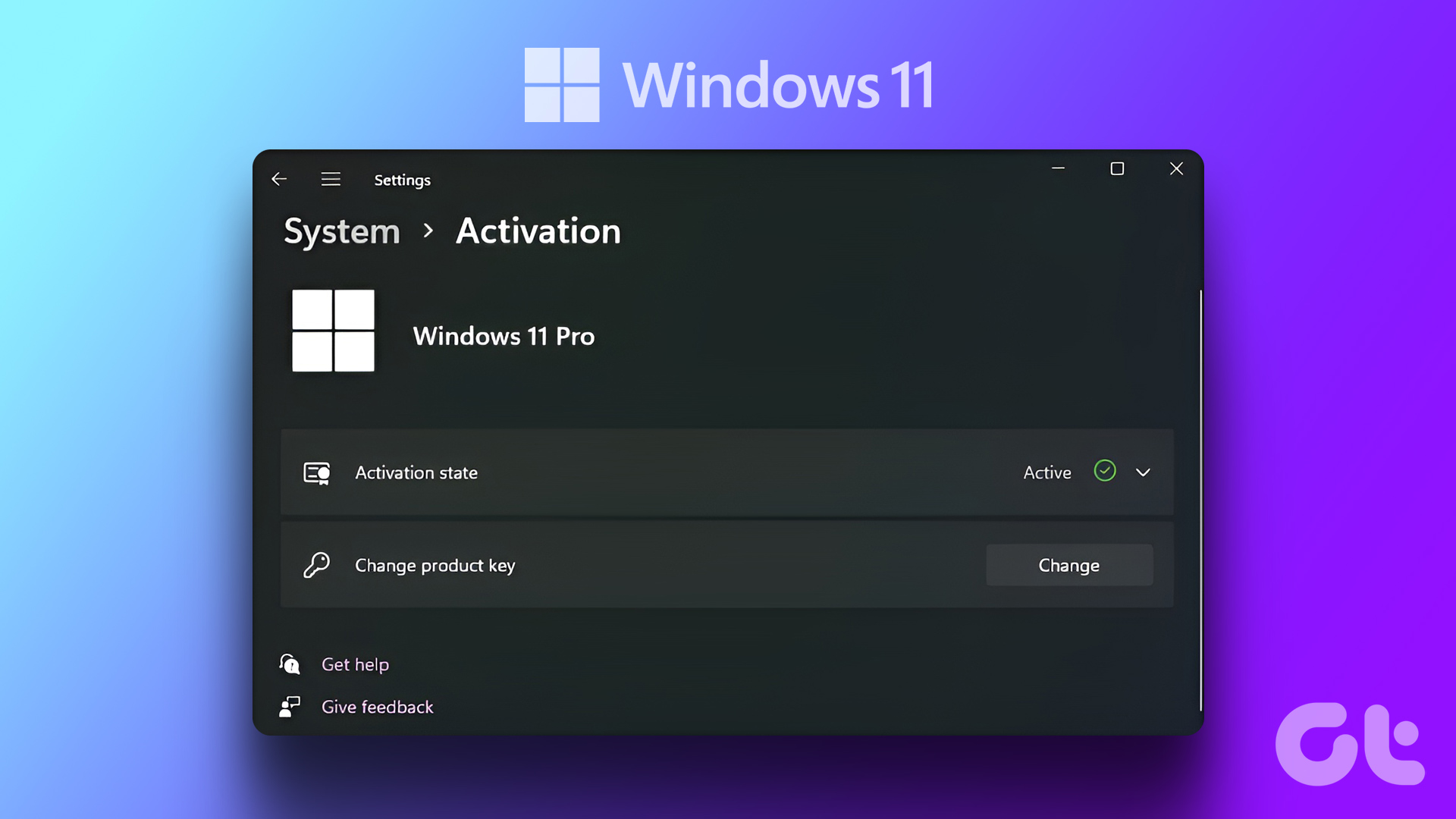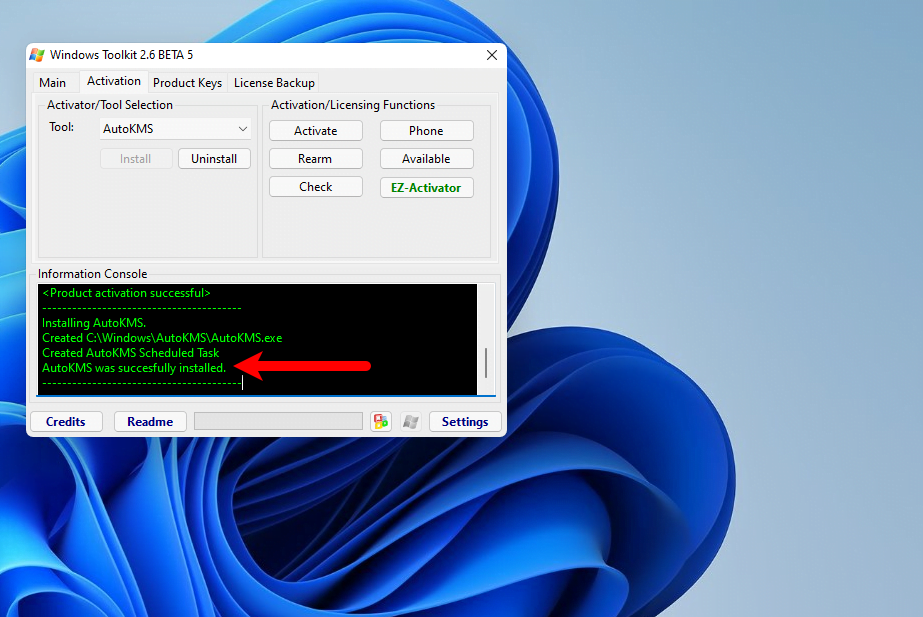Can you breathe life back into your Windows 11 installation without the hassle of a product key? The answer, surprisingly, is a resounding yes, and the command prompt is your secret weapon. This article delves into the intricacies of activating Windows 11, offering a comprehensive guide that will empower you to navigate the activation process with confidence, and all without reaching for your wallet (or the settings app).
The realm of Windows activation often seems shrouded in mystery, with product keys and licensing agreements creating a barrier for many users. But the truth is, Microsoft provides alternative methods to ensure your operating system is legitimate and functional. Whether you're a tech-savvy enthusiast or a newcomer to the world of command-line interfaces, this guide is designed to demystify the process of activating Windows 11, providing you with clear, concise instructions that even the most novice user can follow. We will explore how the command prompt becomes a powerful ally in managing your Windows 11 license, offering solutions that allow you to enjoy all the features your operating system has to offer.
| Windows 11 Activation via Command Prompt: A Step-by-Step Guide | |
| Objective | To activate Windows 11 using the command prompt, bypassing the need for a traditional product key (in certain scenarios). |
| Prerequisites |
|
| Methods |
|
| Step-by-Step Instructions (slmgr Method) |
|
| Step-by-Step Instructions (Volume License Key Method) |
|
| Step-by-Step Instructions (Windows 10 Key Method) |
|
| Potential Volume License Keys (Disclaimer) | Note: Publicly sharing or using volume license keys is a violation of Microsoft's licensing terms. These keys are usually meant for enterprise and educational use. Therefore, we are not suggesting to use any of these keys which violates terms and conditions, but in the context of information the keys are:
|
| Bypassing the Internet Connection During Installation (Advanced) |
|
| Disclaimer | These methods are provided for informational purposes and are not officially endorsed by Microsoft. Always adhere to Microsoft's licensing terms and conditions. Incorrect usage of activation methods can lead to licensing issues. |
| Reference | Microsoft's Activation Scenario Overview |
To activate Windows using the command prompt, you must first open the command prompt with administrative privileges. This is a critical step, as it ensures the commands you enter have the necessary permissions to make changes to your system's licensing settings. You can achieve this by clicking the Start button, typing "cmd" or "command prompt" in the search bar, right-clicking on "Command Prompt," and selecting "Run as administrator." This will open the command prompt window, allowing you to begin the activation process. Ensure you have administrative rights to proceed with the steps outlined below.
The Software Licensing Management Tool (slmgr) is a powerful utility, a command-line script built into Windows designed for managing the licensing of your operating system. One of its primary functions is to install product keys, which are essential for activating Windows. It can also activate Windows, check activation status, and perform other license-related operations. Using slmgr, you can bypass the usual graphical interface and interact directly with the Windows licensing service, offering a more hands-on and sometimes more effective method for activation.
The command `slmgr /ipk
- Unveiling Alfonso Soriano Net Worth A Deep Dive Into His Wealth And Career
- Wade Phillips Net Worth An Indepth Look At The Legendary Nfl Coachs Earnings
Once the appropriate license key has been installed, you can proceed with the activation. The command `slmgr /ato` is your go-to for activating Windows. When executed, this command attempts to activate Windows using the installed product key and contacts Microsoft's activation servers. If the key is valid, and your internet connection is stable, Windows will be activated. You should see a confirmation message indicating successful activation. If you have a problem then check your internet settings.
After running the activation command, it's always a good idea to confirm that your Windows installation is activated. Use the command `slmgr /xpr` to show the expiration date of the license and ensure it is active. Another command, `slmgr /dlv` (Display License Information), provides detailed information about your license, including the activation status and the product key's details. This can be useful for troubleshooting activation issues or confirming that everything is in order.
Activation failures can occur for various reasons. One common issue is an invalid product key. Double-check that the key you entered is correct and matches your Windows edition. Ensure that you have a stable internet connection during activation; the process requires communicating with Microsoft's activation servers. Also, keep in mind that certain product keys may be restricted to specific types of installations, such as those for enterprise or educational use. If you encounter persistent problems, consider seeking assistance from Microsoft support or consulting online resources for troubleshooting tips.
When activating Windows, particularly using the command prompt, it's crucial to proceed with caution. While the command prompt offers powerful capabilities, incorrect commands can lead to unintended consequences. Always ensure you have the correct product key for your Windows edition. Make sure you have administrative rights before running the commands. Keep in mind that these activation methods may not be officially supported by Microsoft. Always be mindful of Microsoft's licensing terms and conditions. Incorrect use of these methods can potentially lead to issues with compliance.
In an enterprise environment, Windows activation often involves volume licensing, which uses specific keys. These keys are designed for multiple installations and are managed differently. In such cases, activating Windows via the command prompt may involve the use of Volume License Keys (VLKs). You'd use the `slmgr /ipk
If you have a Windows 10 product key and are upgrading to Windows 11, the process is designed to be seamless. During the Windows 11 installation, if you're upgrading from Windows 10 and you already have a valid product key, Windows 11 should automatically recognize and activate the system without requiring you to enter a new key. Your existing license is carried over, maintaining your activation status. You generally don't need to perform any additional steps, provided you're using the upgrade path, which preserves your files and programs. However, you may need to manually enter the Windows 10 product key during installation.
For those who may be struggling with the internet connection during the Windows 11 installation, there's a way to get past the initial setup screen and proceed without connecting. By pressing `Shift + F10` (or `Fn + Shift + F10`) during the installation, you can open the command prompt. From there, you can bypass the internet connection requirement and continue with the installation. This is helpful if you need to install Windows on a system without immediate internet access, letting you finish the setup and activate Windows later, when a connection is available. This enables you to proceed without mandatory internet connectivity.
Locating your Windows 11 product key can be useful for reinstallations or troubleshooting purposes. Using the command prompt, you can retrieve your product key without relying on third-party software. Open an elevated command prompt (Run as administrator) and use the `wmic path softwarelicensingservice get OA3xOriginalProductKey` command. This command will display your installed product key. Keep this key in a secure place. This command is a built-in tool. Please note, on prebuilt OEM computers, the key is often stored within the system's firmware and is automatically used. However, if you're using a custom-built PC, the key retrieval step is important.
While the command prompt offers a powerful means of activating Windows, other options exist. Typically, you would activate Windows 11 through the Settings app. Navigate to System, then Activation, and follow the on-screen instructions. There, you can enter your product key or troubleshoot activation issues. Activation through the Settings app offers a user-friendly approach, with clear prompts and guidance. This method also works well for users who have a product key that matches their current Windows 11 installation.
Is activating Windows with the command prompt safe? Activating Windows using the command prompt is generally considered safe. However, ensure that you obtain the correct product key. It is safe to use the command prompt. It is also important to be aware that incorrect usage of commands can sometimes lead to complications. Always double-check commands and keys before execution. Keep in mind that the command prompt is a tool for managing Windows licenses and that there are other, equally valid methods of activation. When in doubt, seek guidance from Microsoft support or consult reliable online resources.
Are there any alternatives to activate Windows through the command prompt? Yes, the primary method is through the Settings app, by entering a valid product key. If you have a valid product key, you should use the Settings app to activate Windows. In enterprise environments, your organization might use a Key Management Service (KMS) server. If you have a valid license key, this approach will often be the preferred and most straightforward option. The best way to activate your Windows installation depends on your specific situation, your license type, and your familiarity with the activation process.
If you are looking to activate Windows without a key, and if you are using a prebuilt OEM computer, the digital key is usually embedded in the system, and Windows should activate automatically. While it may not work on a clean install, upgrades from within the operating system should carry the digital key across. If you're upgrading from Windows 10 to Windows 11 while keeping all your programs and files, the system should activate automatically during the installation process, eliminating the need to enter a product key. It is often important to ensure you have a legitimate license before starting any activation process.
The Windows 11 batch file method involves creating a script that executes several commands to manage the Windows license. You can write a batch file using a text editor, and then run it with administrator privileges. While this is possible, it is essential to be cautious about the scripts you run. Always make sure you understand what the script does before executing it. Never run an unknown batch file without verifying its safety. The cmd/batch method can be useful for automating activation, but it carries some risks if not handled correctly. Ensure you have a valid license before attempting these steps.
To activate Windows 11 for free, there are no officially supported ways to do so without a license. If you're looking to activate Windows 11 without a product key, you may consider using the method involving the command prompt. Keep in mind that this may not be officially endorsed by Microsoft. There are alternative, non-official methods, such as the use of scripts and activation tools, but using them can violate Microsoft's terms of service and lead to potential security risks. It's better to have a genuine license and always stay in line with the official license terms.
Activating Office 365 through the command prompt is not usually a direct process. Office 365 is a subscription-based service and is activated differently. Activation depends on the subscription type and how it is managed (for example, through your Microsoft account or your organization's IT department). The KMS client key for activating Office 365 will usually be provided to you via your subscription or the IT staff of your company.
In summary, the command prompt can be a powerful tool for activating Windows 11, offering flexibility, especially in enterprise environments or when you want to bypass the GUI. However, the best activation method is often the one that aligns with your license. Always ensure you have a valid license and follow Microsoft's guidelines. Make sure you adhere to the licensing terms for legal and secure use of your Windows operating system.



Detail Author:
- Name : Lauretta Rodriguez
- Username : desiree63
- Email : yfriesen@hotmail.com
- Birthdate : 1986-03-29
- Address : 95850 Schimmel Ville New Tatyanahaven, WA 96587
- Phone : 352.695.6463
- Company : Boehm Ltd
- Job : Bicycle Repairer
- Bio : Totam qui asperiores ullam. Qui laudantium cum odit natus eveniet fugiat tempora nam. Doloribus et accusamus doloremque praesentium non qui.
Socials
tiktok:
- url : https://tiktok.com/@lila_hayes
- username : lila_hayes
- bio : Animi soluta quam quaerat fugit vel. Sequi ut aut qui mollitia.
- followers : 5838
- following : 1153
twitter:
- url : https://twitter.com/lila1756
- username : lila1756
- bio : Quidem velit qui quia rerum enim est. Facilis quidem accusamus repellendus. Dolorem similique sed excepturi aperiam impedit.
- followers : 1478
- following : 2403